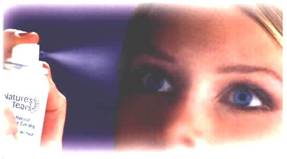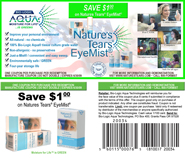
LASIK Dry Eye
Pre-Operative and Post-Operative LASIK Dry Eye Precautions for Improved LASIK Recovery
LASIK surgery (laser-assisted in-situ keratomileusis) is a popular refractive surgery procedure offering improved eyesight for millions. A condition called "LASIK dry eye" has become a fairly common side effect that can cause, in some individuals, extreme eye discomfort. With wise pre-operative and post-operative precautions, the risk and severity of LASIK dry eye during LASIK recovery may be reduced.
Patient satisfaction for LASIK surgery is between 92-98 percent and the risk of infection is greater from wearing contact lenses than from LASIK complications. The incidence of post-LASIK dry eye six months following surgery is 36%. Untreated dry eye symptoms, caused by a loss of natural water in the eye's protective tear film covering (the tear film should contain 99% water) can compromise or diminish LASIK surgery outcome. In a small percentage of patients, post-LASIK dry eye is severe, permanent and untreatable, causing chronic pain and eyesight impairment. .
Several pre-operative and post-operative precautions may prevent or reduce the risk and severity of LASIK dry eye and enhance the LASIK recovery process:

- The pre-operative exam, at least three months in advance, should include evaluation for slight, chronic and/or severe dry eye. The LASIK procedure should be delayed until the patient is free of all dry eye symptoms.
- Regardless of whether or not dry eye is diagnosed (your eyes always need water), follow the program described below, on a daily basis, to improve natural tear film water and alleviate dry eye symptoms. Begin the program at least three months prior to surgery (LASIK recovery will be more successful if eyes are healthy at the time of surgery and are prepared well in advance).
- Daily program to improve natural tear film water content and alleviate dry eye symptoms:
- Drink 8 to 10 glasses of water a day.
- Reduce stress and get sufficient sleep and exercise.
- Keep weight under control (a lean person's body is about 70% water while an obese person's body can be as low as 40% water).
- Avoid prolonged or repeated exposure to high-risk dry eye conditions (weather extremes, wind, air pollution, forced-air heating and cooling, insulated walls and windows, low humidity, stagnant air, smoke, chemical fumes, extended computer use, eye allergies, eye strain, etc).
- Increase intake of "eye foods" (dark green leafy vegetables, omega-3 fatty acids and carrots).
- Take frequent hot showers (with lots of steam) and long luxuriant baths.
- Increase natural tear film water content by misting eyes several times daily with an all-natural hand-held eye mist (Nature's Tears EyeMist).
- Refractive eye surgeons recommend that patients not wear soft contact lenses 15 to 21 days prior to surgery and that they discontinue wearing hard contact lenses six weeks prior to surgery. For hard contact lenses, add six more weeks of discontinuance for every three years you have worn the lenses.
- Maintain the natural tear film water enhancement and anti-dry eye program, including regular application of Nature's Tears EyeMist, for at least six months following surgery. If you maintain the program forever, your eyes will me more likely to remain healthy, comfortable and well functioning.
Sources:
Mathers, W, MD, "Tear Film and Treatment of Dry Eye Disease," 2005 (Sponsored by Bio-Logic Aqua Research)
www.naturestears.com (4/11/11 "Living with Chronic Dry Eye")
www.naturestears.com (7/17/08 "M. McDonald. MD on LASIK Surgery")
www.Wikipedia.com ("LASIK Surgery")









